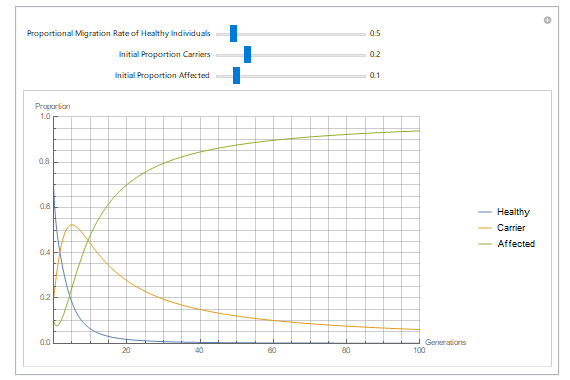計算生物学
生物系および生化学系をモデル化し,そのシミュレーションを実行し,可視化します.反応動力学もモデル化し,そのシミュレーションを実行します.
Hardy–Weinberg Equilibrium
The Hardy–Weinberg principle is a fundamental principle in population genetics. It describes populations that are no longer undergoing evolution and thus reach a steady state. In this virtual lab, you will learn to construct a genetic inheritance model and analyze scenarios when the assumptions of Hardy–Weinberg equilibrium are violated.
Model
The model diagram shows the different states used in the model and transitions between them. There are three main states—Healthy, Carrier and Affected. The arrows represent a transition from one state to another. The Birth state adds new members to the population, while the Death state removes members from the population.

A basic genetic inheritance model of an autosomal recessive disease.
Analysis
Migration leads to either the influx of alleles into or efflux of alleles from a population, which generates a change in the gene pool. A change in the gene pool of a population can lead to significant changes in the proportion of individuals with each trait and lead to violation of Hardy–Weinberg equilibrium.
Analysis
Use the Wolfram Language to carry out parametric analysis.

Effect of migration on genetic inheritance.
Wolfram System Modeler
評価版
ご購入
System ModelerはWindows,macOS,
Linuxで
日本語と英語でご利用になれます »
ご質問やコメントはWolframエキスパートまでお寄せください »